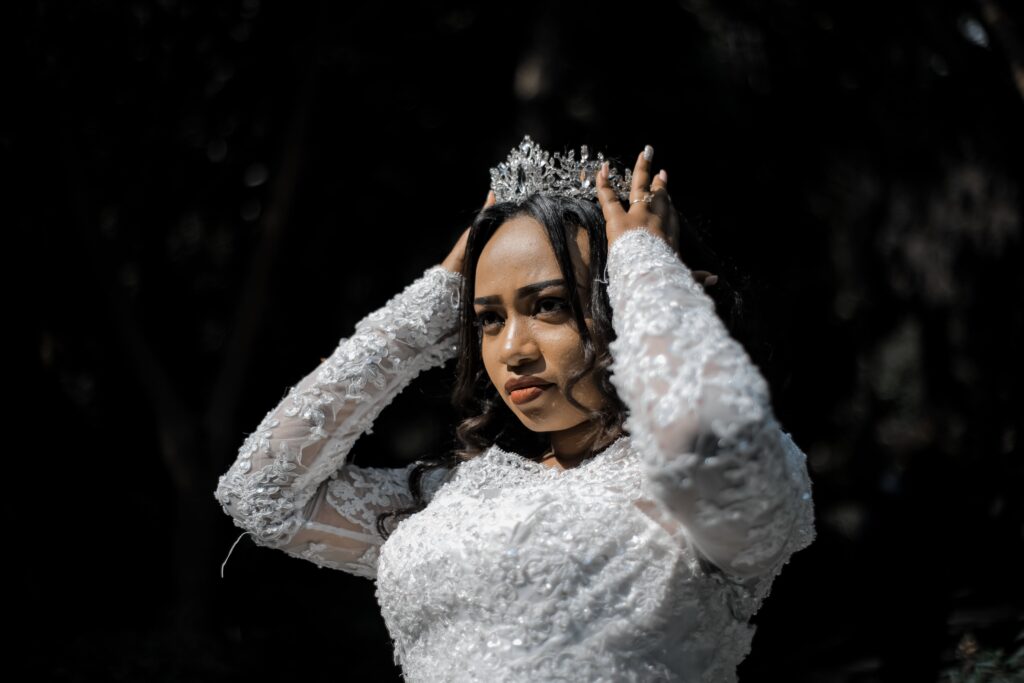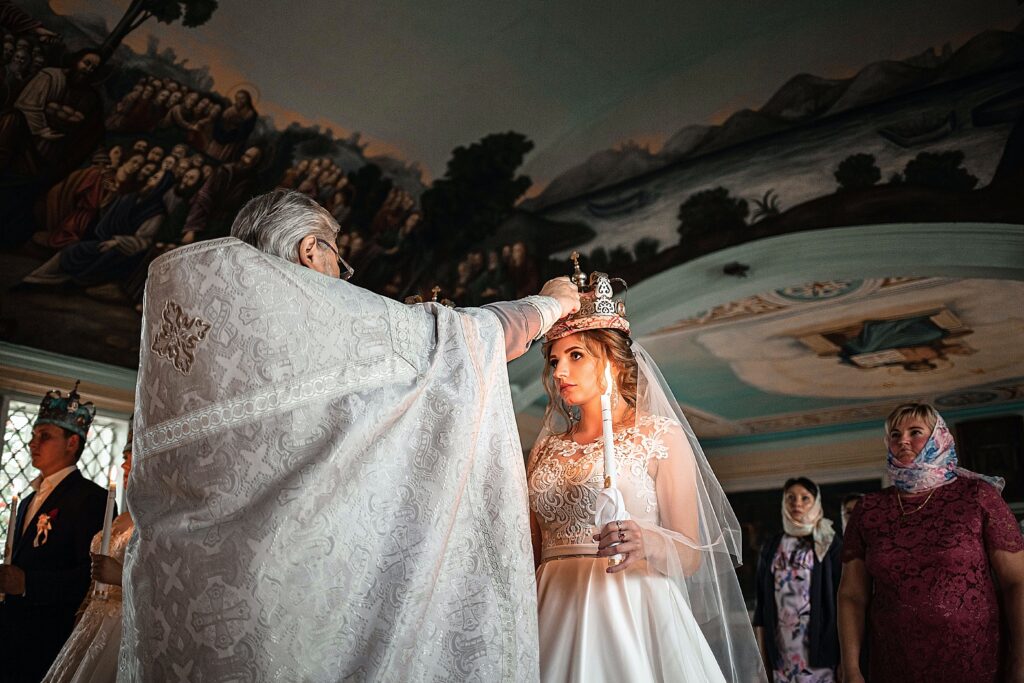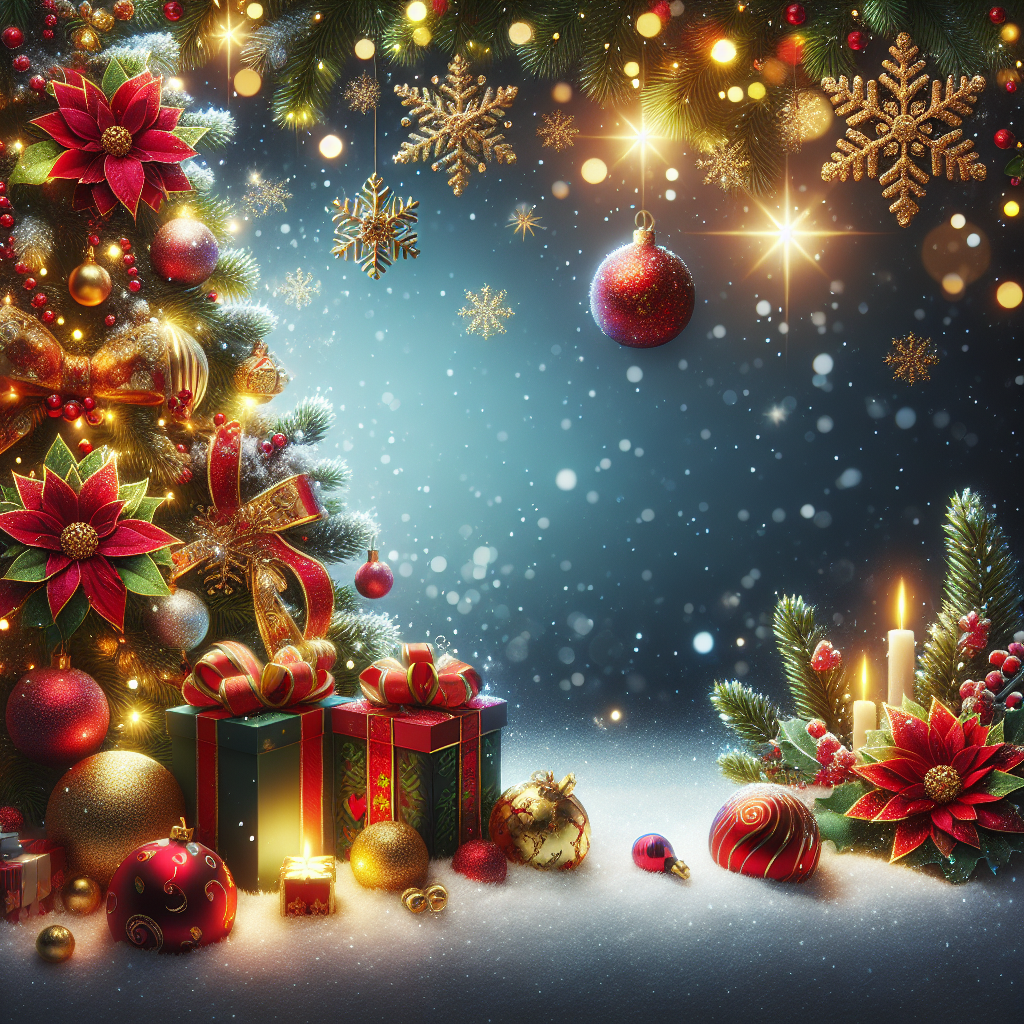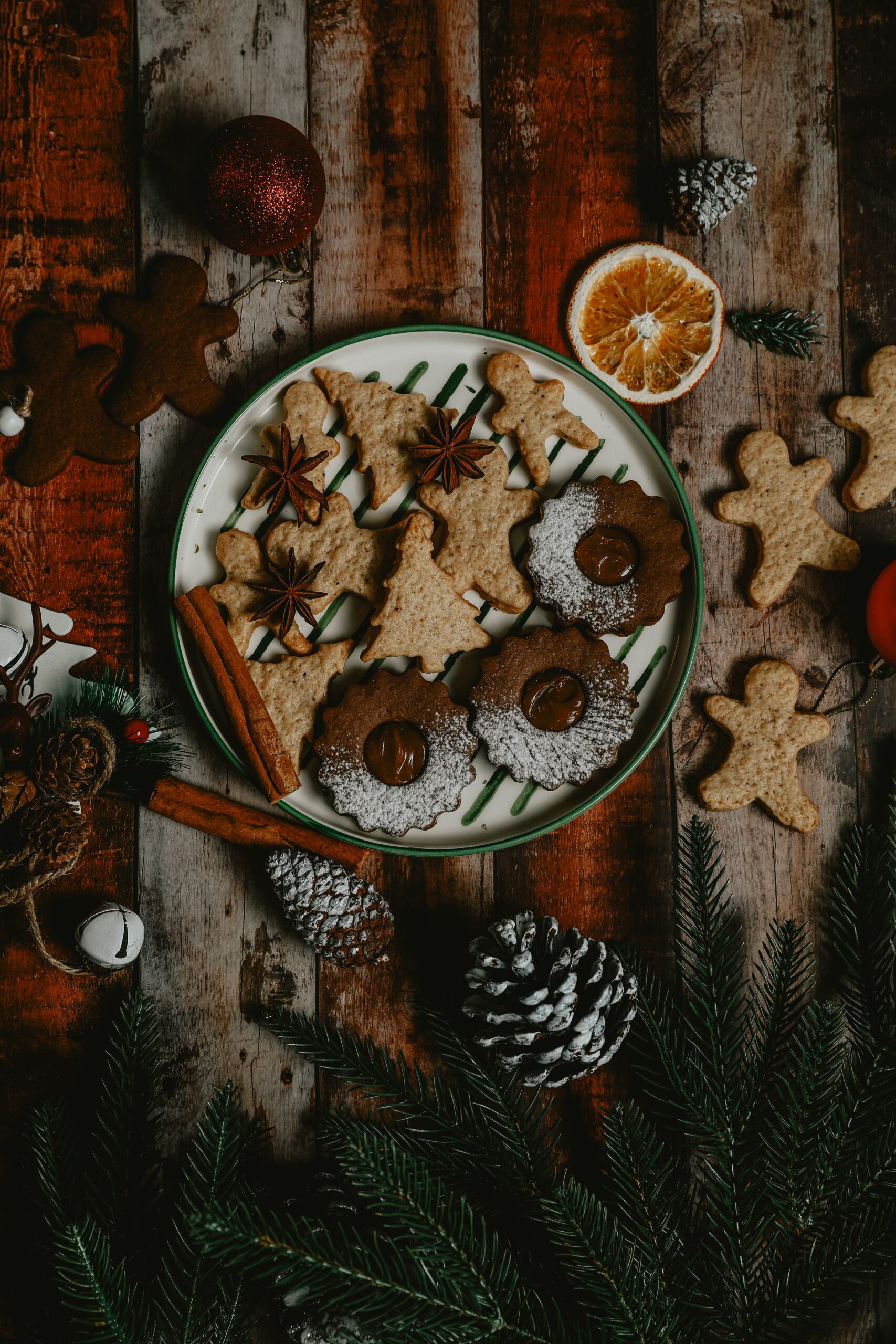Ah, Christmas, a time filled with joy, love, and the warm embrace of family and friends. It’s no wonder that this festive season is eagerly awaited by people all around the world. From the twinkling lights adorning houses to the mouth-watering aroma of freshly baked cookies, Christmas truly encapsulates the spirit of giving and togetherness. But have you ever wondered about the origins and lesser-known facts about this beloved holiday? In this article, we will explore five fascinating facts about Christmas that will surely leave you feeling merry and bright. So grab a cozy blanket, sip on some hot cocoa, and let’s uncover the captivating tales behind this magical time of year.
Table of Contents
Origin of Christmas
The birth of Jesus Christ
Christmas is a holiday celebrated around the world on December 25th to commemorate the birth of Jesus Christ. According to the Christian faith, Jesus was born in Bethlehem over two thousand years ago. The story of His birth is detailed in the New Testament of the Bible, particularly in the books of Matthew and Luke. It is believed that Jesus’ birth was a miraculous event, as He was conceived by the Virgin Mary through the power of the Holy Spirit.
Pagan origins and Roman festival
Before Christmas became associated with the birth of Jesus, it had pagan origins. The celebrations during this time of year were linked to the winter solstice and the Roman festival of Saturnalia. Saturnalia was dedicated to the Roman god Saturn and was a time of feasting, merriment, and the exchange of gifts. As Christianity spread, these pagan traditions were incorporated into the celebration of Christmas, transforming it into a religious holiday.
Early Christian celebrations
The exact date of Jesus’ birth is not mentioned in the Bible. It wasn’t until the 4th century that December 25th was chosen as the official date to celebrate Christmas. The early Christians wanted to establish a Christian festival that would compete with the pagan celebrations taking place around the same time. By celebrating Jesus’ birth on December 25th, they hoped to convert more people to Christianity. Over time, Christmas became an important holiday in the Christian calendar and took on various customs and traditions.
Christmas Traditions
Exchanging gifts
One of the most cherished Christmas traditions is the exchanging of gifts. This tradition originated from the biblical story of the three wise men who brought gifts to baby Jesus. Giving and receiving presents symbolizes the love and goodwill associated with Christmas. People often spend time carefully selecting gifts for their loved ones, wrapping them in colorful paper, and placing them under the Christmas tree. The joy of watching someone open a gift and the anticipation of receiving presents add to the excitement and magic of Christmas.
Decorating Christmas trees
Decorating Christmas trees has been a long-standing tradition during the holiday season. This tradition dates back to the 16th century in Germany, where people would decorate evergreen trees with apples, candles, and other ornaments. The Christmas tree represents life and fertility, even during the cold winter months. Today, people all over the world put up Christmas trees in their homes, adorned with lights, baubles, tinsel, and a decorative star or angel on top. It has become a beautiful symbol of Christmas and a focal point for family gatherings.
Mistletoe and Holly
Mistletoe and holly are often used as decorations during the Christmas season. Mistletoe is a parasitic plant that grows on trees and has long been associated with various traditions and beliefs. One popular tradition is that when someone stands beneath the mistletoe, they must receive a kiss from someone else. It is said to bring good luck and romance to those who embrace beneath it. Holly, with its bright red berries and spiky green leaves, is also a popular symbol of Christmas. It is often used in wreaths and garlands, bringing a festive touch to homes and celebrations.
Christmas stockings
Hanging stockings by the fireplace is a tradition that can be traced back to the legend of St. Nicholas. According to the story, St. Nicholas noticed a family in need and decided to help them anonymously by dropping gold coins into their stockings, which were hanging by the fireplace to dry. Since then, children hang stockings on Christmas Eve, hoping to find small gifts and treats left by Santa Claus or their loved ones. Stockings are often personalized with names and are filled with small toys, candies, and other surprises, making Christmas morning even more enjoyable for everyone.
Santa Claus and Christmas stockings
Santa Claus, also known as Father Christmas or Kris Kringle, plays a significant role in the Christmas traditions of many countries. The modern-day image of Santa Claus, a jolly old man with a white beard dressed in a red suit, was popularized by Coca-Cola in the 1930s. Santa Claus is believed to live at the North Pole, where he has a workshop filled with elves who help him make toys for children around the world. On Christmas Eve, Santa Claus flies in his sleigh pulled by reindeer, delivering presents to well-behaved children. The tradition of hanging stockings for Santa Claus to fill has become a beloved part of Christmas celebrations.

Christmas Symbols
Christmas tree
The Christmas tree is a symbol deeply associated with the holiday season. It represents everlasting life and hope during the winter months. The tradition of decorating Christmas trees originated in Germany and spread throughout Europe in the 19th century. Today, families all over the world bring live or artificial trees into their homes, decorating them with lights, ornaments, and a variety of decorations. The sparkling lights and beautifully adorned branches create a festive and magical atmosphere, bringing joy and warmth to the holiday season.
Mistletoe and Holly
Mistletoe and holly are iconic symbols of Christmas. Mistletoe is often hung in doorways or ceilings, where couples standing or passing beneath it are encouraged to share a kiss. This tradition is said to bring good fortune and love during the holiday season. Holly, with its vibrant red berries and glossy green leaves, symbolizes joy and goodwill. It is commonly used in wreaths, garlands, and centerpieces, adding a touch of natural beauty and festive cheer to homes and celebrations.
Christmas wreaths
Christmas wreaths are circular arrangements made from evergreen foliage, such as pine, cedar, or fir branches. Wreaths represent eternity, as their circular shape has no beginning or end. They are often adorned with ribbons, bows, pine cones, and other festive ornaments. Christmas wreaths are typically hung on front doors as a welcoming symbol, but they can also be displayed indoors as a festive decoration. The fresh scent and vibrant greenery of wreaths evoke feelings of warmth and enchantment, creating an inviting and merry atmosphere.
Santa Claus and reindeer
Santa Claus and reindeer are inseparable symbols of Christmas. Santa Claus is portrayed as a friendly, plump man with a white beard, dressed in a red suit and a black belt. He embodies the spirit of giving and joy, traveling around the world on his sleigh pulled by magical reindeer, including the most famous one, Rudolph with his shiny red nose. The image of Santa Claus flying through the night sky, delivering gifts to children on Christmas Eve, captures the hearts and imaginations of people of all ages and is an enduring symbol of the holiday season.
Candles and lights
Candles and lights play a significant role in creating the cozy and magical ambiance of Christmas. The tradition of lighting candles during the holiday season dates back to ancient times when candles were used to symbolize the return of light during the darkest time of the year. Today, candles are often used in Advent wreaths and as part of religious rituals. Lights, both indoors and outdoors, are also a common decoration, ranging from twinkling Christmas lights on trees and houses to elaborate light displays in public areas. The warm glow of candles and lights adds a touch of enchantment and spreads the joy of Christmas.
Christmas Around the World
Different names for Christmas
While Christmas is celebrated globally, different countries and cultures have their own unique names for the holiday. In Spain, it is called “Navidad,” while in Italy, it is known as “Natale.” In Germany, it is referred to as “Weihnachten,” and in France, it is called “Noël.” These various names reflect the diversity and richness of global traditions and remind us that Christmas is a truly universal holiday.
Unique customs and traditions
Each country and culture has its own customs and traditions associated with Christmas. In Mexico, the nine-day celebration called “Las Posadas” reenacts Mary and Joseph’s search for lodging before the birth of Jesus. In Sweden, families gather to celebrate “Julbord,” a Christmas smorgasbord filled with traditional dishes. In Japan, Christmas Eve is often celebrated as a romantic holiday, with couples exchanging gifts and enjoying a romantic dinner. These unique customs and traditions add depth and richness to the global celebration of Christmas.
Christmas food and drinks
Food and drinks are an integral part of Christmas celebrations worldwide. Traditional dishes vary from country to country but often include festive favorites such as roasted meats, poultry, fish, vegetables, and delicious desserts. In the United States, a classic Christmas dinner may feature roast turkey, cranberry sauce, mashed potatoes, and pumpkin pie. In the United Kingdom, a Christmas pudding soaked in brandy and set on fire is a staple. Christmas is also a time for special beverages, such as eggnog, mulled wine, and hot cocoa, which add warmth and flavor to the festive season.

Christmas Music and Carols
The history of Christmas carols
The tradition of singing Christmas carols dates back hundreds of years. The word “carol” means a song of joy or praise, and caroling has long been associated with the celebration of Christmas. Originally, carols were pagan songs that were eventually adapted to have Christian themes. The first recorded collection of Christmas carols dates back to the 15th century in England. Over time, caroling became an important part of the Christmas festivities, with groups of singers going from door to door, spreading holiday cheer through their melodious voices.
Popular Christmas songs
Christmas songs have become an integral part of the holiday season, bringing joy, nostalgia, and a sense of togetherness. Many popular Christmas songs have become timeless classics, such as “Jingle Bells,” “Silent Night,” and “White Christmas.” These songs are played on the radio, sung in churches, and performed by countless artists around the world. The familiar melodies and heartwarming lyrics evoke the spirit of Christmas and create a festive atmosphere wherever they are heard.
Singing carols
Singing Christmas carols is a beloved tradition for many people during the holiday season. Whether gathered around a piano, attending a church service, or caroling in the community, the act of singing carols brings people together and spreads the joy of Christmas. It is a time when voices join in harmony, creating a sense of unity and togetherness. Singing carols allows individuals to express their love for the holiday and share in the timeless tradition of celebrating through song.
Christmas Movies and Literature
Classic Christmas movies
Christmas movies have a special place in the hearts of many people during the holiday season. Classics like “It’s a Wonderful Life,” “A Christmas Carol,” and “Home Alone” have captivated audiences for generations. These movies often tell heartwarming stories of love, family, and the true meaning of Christmas. They serve as a reminder to cherish the people and moments that truly matter in our lives. Watching these films has become a cherished tradition for many families, bringing them together and creating lasting memories.
Famous Christmas books and stories
Literature has also played a significant role in shaping the Christmas tradition. Books like “A Christmas Carol” by Charles Dickens and “The Polar Express” by Chris Van Allsburg have become iconic works that capture the magic and spirit of Christmas. These stories often teach valuable lessons and inspire readers to embrace the virtues of generosity, compassion, and love. Many people also enjoy curling up with a festive book during the holiday season, immersing themselves in tales that evoke the warmth and enchantment of Christmas.
The tradition of reading and watching Christmas-themed tales
The tradition of reading and watching Christmas-themed tales has become a cherished part of the holiday season. These stories and movies ignite the imagination, evoke nostalgia, and provide opportunities for heartfelt discussions about the values and meanings behind Christmas. Whether read aloud with loved ones or enjoyed in solitude, these tales create a sense of wonder and remind us of the beauty and joy that can be found during this special time of year.

Christmas Food and Treats
Traditional Christmas meals
Traditional Christmas meals vary around the world, but they all share a common theme of bringing loved ones together to share a festive feast. In the United States, a classic Christmas dinner often includes roast turkey or ham, accompanied by a variety of side dishes such as mashed potatoes, green beans, and cranberry sauce. In Italy, a traditional Christmas Eve feast called “La Vigilia” features a multi-course seafood dinner, while Christmas Day may include baked pasta dishes and panettone. Traditional Christmas meals reflect cultural traditions and are an opportunity to savor delicious food while creating lasting memories with family and friends.
Popular Christmas desserts
Christmas desserts are a sweet finale to any festive meal and often include decadent treats that are eagerly anticipated during the holiday season. In many countries, fruitcake is a Christmas staple, loaded with dried fruits and nuts and soaked in alcohol. Gingerbread cookies, rich Yule logs, and festive trifle are also popular choices. A common thread among these desserts is the use of warm spices like cinnamon, nutmeg, and ginger, which are reminiscent of the flavors associated with Christmas. These indulgent delights add a touch of sweetness and delight to the holiday celebrations.
Christmas cookies and treats
There is something magical about Christmas cookies and treats that brings out the inner child in all of us. Baking and decorating cookies is a popular tradition during the holiday season, allowing families and friends to come together and create edible works of art. Sugar cookies, gingerbread men, and shortbread are often shaped into festive designs and adorned with colorful icing and sprinkles. Treats like peppermint bark, caramel popcorn, and chocolate truffles are also favorites during this time of year. The aroma and taste of these delightful confections add to the joy and deliciousness of Christmas.
Interesting Santa Claus Facts
Origins of Santa Claus
Santa Claus, as we know him today, has evolved over centuries and draws inspiration from various sources. The image of Santa Claus is believed to have originated from the legend of Saint Nicholas, a 4th-century Christian bishop known for his generosity. The tradition of gift-giving and the association with Christmas evolved further through folklore, literature, and even Coca-Cola advertisements. Today, Santa Claus represents the spirit of giving, spreading joy and making dreams come true for children around the world.
The legend of Saint Nicholas
The legend of Saint Nicholas has its roots in ancient times. Nicholas, an actual historical figure, was known for his kind and generous nature. He became the patron saint of children, sailors, and merchants. The story of him secretly giving gifts to those in need, such as leaving coins in the stockings of three poor sisters, has played a significant role in shaping the modern Santa Claus. Saint Nicholas’ legacy of compassion and selflessness is a reminder of the true spirit of Christmas.
Different names for Santa Claus
Santa Claus goes by different names around the world. In the United Kingdom, he is often called “Father Christmas,” while in France, he is known as “Père Noël.” In Germany, he is called “Weihnachtsmann,” and in Italy, he is referred to as “Babbo Natale.” These names reflect the cultural diversity and regional traditions associated with Santa Claus. No matter what he is called, Santa Claus embodies the generosity and joy that is synonymous with the Christmas season.

Christmas Traditions and Customs
Midnight Mass and church services
Attending Midnight Mass or other church services is a longstanding Christmas tradition for many Christians. These services typically take place on Christmas Eve, culminating in the celebration of Jesus’ birth at midnight. Churches are beautifully decorated with candlelight, nativity scenes, and festive hymns fill the air, creating a serene and reverent atmosphere. It is a time for worship, reflection, and coming together as a community to honor the true meaning of Christmas.
Advent and Advent calendars
Advent is a period of preparation and anticipation leading up to Christmas, observed by many Christians worldwide. It usually begins on the fourth Sunday before Christmas and lasts until Christmas Eve. Advent calendars, with their numbered doors or pockets counting down the days until Christmas, are popular during this time. Each day, a door is opened to reveal a small gift or treat, building excitement and helping individuals stay mindful of the approaching celebration.
Christmas markets and fairs
Christmas markets and fairs are festive gatherings that take place in many cities and towns during the holiday season. They offer a variety of food, drinks, crafts, and entertainment, creating a delightful experience for visitors. The markets are often adorned with twinkling lights, decorated stalls, and the aroma of seasonal delicacies. These vibrant events provide an opportunity to shop for unique gifts, enjoy traditional foods, and immerse oneself in the festive spirit. Christmas markets and fairs are cherished traditions that bring communities together and add to the overall joy and excitement of the holiday season.
Christmas Gifts and Shopping
Popular gifts for Christmas
Choosing the perfect gift for loved ones is an important part of the Christmas tradition. Popular gifts often include clothing, electronics, books, toys, and personalized items that reflect the recipient’s interests and preferences. The act of giving gifts represents love, thoughtfulness, and the desire to bring happiness to others. It is a time to show appreciation and make meaningful connections with family and friends.
Christmas shopping trends
Christmas shopping has evolved over the years, with trends in gift-giving and consumer behavior shaping the holiday season. Online shopping has become increasingly popular, offering convenience and a wide range of options. Many people also enjoy supporting local businesses and artisans by shopping at small, independent stores or attending holiday craft fairs. Personalized and handmade gifts have gained popularity as they add a personal touch and reflect the value of thoughtfulness and uniqueness.
Online shopping vs. physical stores
The rise of online shopping has revolutionized the way people shop for Christmas gifts. It offers the convenience of browsing and purchasing items from the comfort of one’s home, with the added benefit of doorstep delivery. However, traditional brick-and-mortar stores continue to attract shoppers who enjoy the festive atmosphere, personal interaction, and the ability to see, touch, and try on products before making a purchase. Both online and physical stores offer unique shopping experiences, and individuals can choose the option that best suits their preferences and needs.
Christmas is a time of joy, love, and togetherness celebrated across the globe. From the birth of Jesus Christ to the traditions and customs that have evolved over centuries, Christmas holds a special place in the hearts of millions. Whether it’s exchanging gifts, decorating Christmas trees, enjoying festive food, or singing carols, the holiday season brings people together and fills the air with warmth and magic. As we celebrate Christmas, let us remember the true meaning of the holiday and embrace the joy of giving, the spirit of love, and the beauty of traditions that make this time of year truly special.


